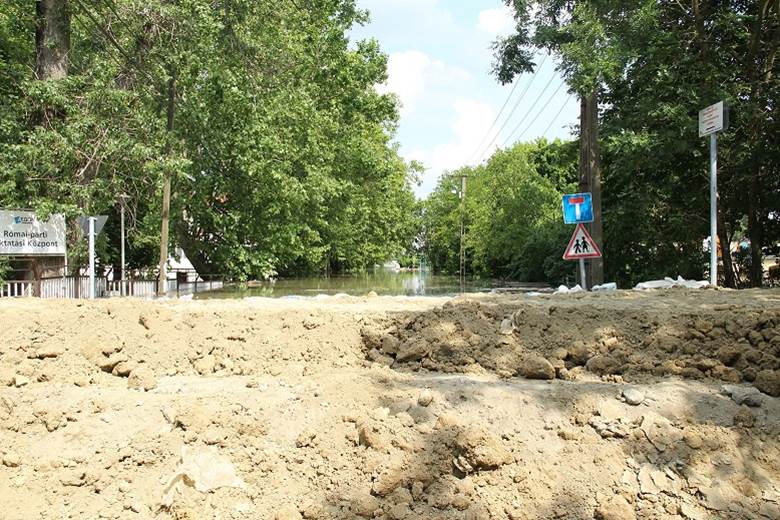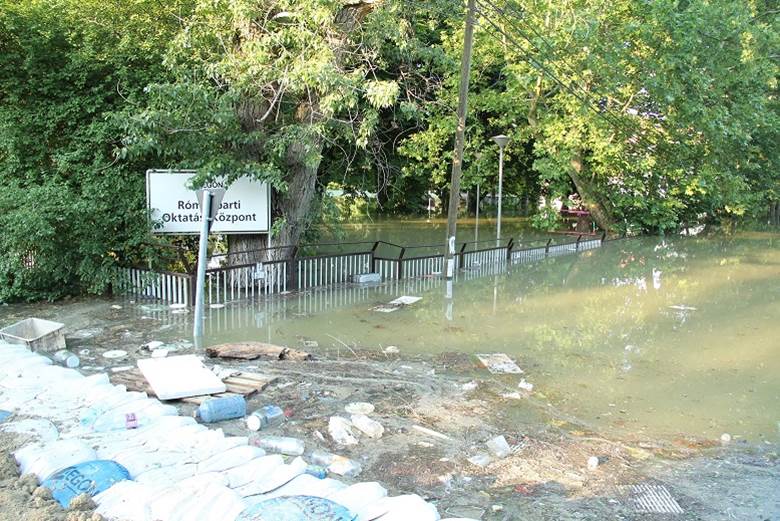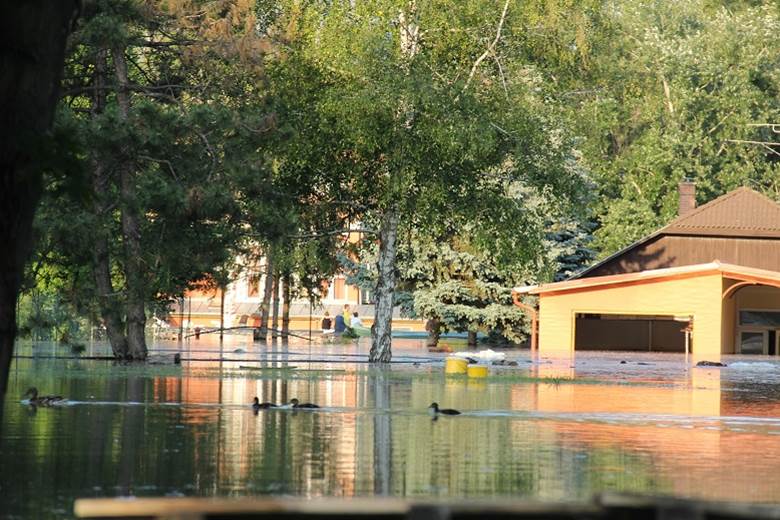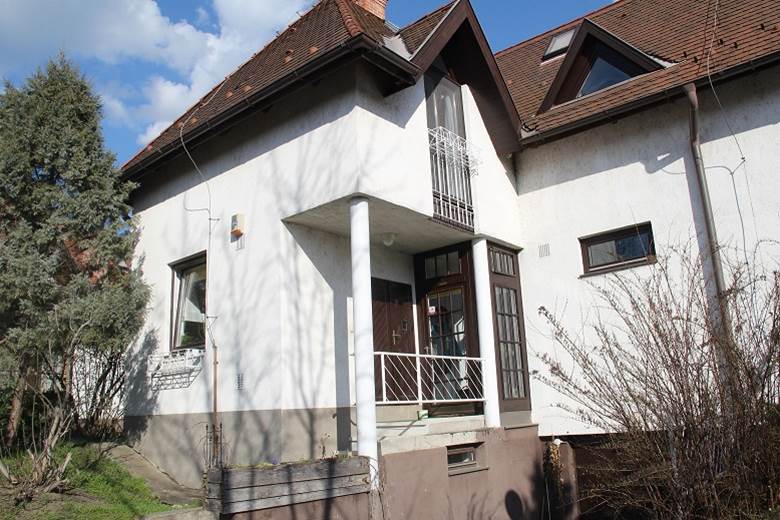
We are barely a week after the highest water level the Danube ever produced at Budapest. The danger is, at least for now, over – but there are lessons learnt which have to be discussed. The still fresh memories and pictures give a good basis for such a discussion.
I live quite close to the Danube in the northern Buda part of Budapest, called Római part (in district III. Óbuda).
Thanks to our ancestors, Budapest is well protected from the Danube, as the protection system (the dams) have largely been built by the end of the 19th century.
There is one area of the city where the final dam is still missing – exactly the Római part area. The reason for that is simple: this 3 km long riverside is the best-known recreation area of Budapest where people have direct access to the Danube and water-life (with boat houses) is the most developed. Holiday makers, living in summer here in different sorts of hotels and common holiday houses, always rejected the idea of building a large dam, behind which water life would cease to exist (as it happened in another part of the area, just a few hundred meters away)
My house is on Királyok útja, a bit left from the middle of the aerial photo below (where you can see 9 identical roofs). On the right of the picture is the Danube, in its normal state. The area between the Danube and Királyok útja is the recreation area and since long time it was forbidden to build residential buildings in this area which is normally flooded when the river is high (which happened lastly in 2002 and 2006).
The flood protection of this part of Római part is a temporary dam (so called “rabbit-dam”), which is along Királyok útja. When a large flood is expected, this dam has to be heightened and also strengthened from the side, which practically means the building of an additional temporary dam in the half width of the road. The following pictures show the dam from the distance of the entrance gate of our estate and the dam itself which has been radically reinforced with large amount of sand and clay, occupying half of the road.
The temporary dam has been created with 3-4 days’ efforts of a large group of workers, using enormous amounts of materials transported by lorries. For a while the road was totally occupied with lorries and hydraulic shovels, working day and night. This was needed as behind the dam and the fence is the endless sea: the water occupied the whole area between Királyok útja and the Danube.
The reinforced dam is almost man-high (normally it is half of that). On the pictures below one can see that the water is only 20-30 cm from the top of the dam, and this means at least 1,5 meters above the level of the street. The picture taken from the top of the dam shows behind the fence the flooded area of a holiday residence.
Piroska utca usually shows a mixture of cars, bikes and walking people. Now it is only accessible by boat. On the right the flooded area of the Holiday Beach hotel can be seen. When there are no disturbing boats, the street is free for the cross-moving ducks…
A few meters away the flooded area of the Alfa Art hotel can be seen: in the front of the picture a happy duck family moves while in the back less happy people approach in a boat the hotel premises.
The final picture might give you an idea what could have happen in case the dam breaks. The water would have flooded a very large area beyond Királyok útja and it would have reached almost the entrance door of our house. The ground-floor would probably have remained dry, but the basement would have filled up with water. No wonder that we were working for a full day to remove all valuable goods from the basement to the higher levels of our house.
What is the balance of this years’ flooding in our area at Római part? By chance the worst did not happen: the reinforced dam protected the area beyond Királyok útja. Even so, the costs are high: the recreational area was totally under water for a week and the costs of building (and later removing) the temporary dam are enormous.
Global warming threatens with ever higher and more frequent floods in the future. It is clear for everyone that the Római part area has to get a permanent flood protection system. Yet, the solution is not clear as there are different options and not only the financial but also the environmental costs would be high.
Debates will intensify between the different options of building a dam. Technical innovation would make a mobile dam possible, which would suit much better such kind of recreational areas. However, opinions differ whether such a dam should be built close to the water, along the Danube, or further away, along the road, Királyok útja. The former option would protect also the recreational area but would require large-scale environmental damage, cutting out the whole natural forest along the Danube. The latter option would keep the unique environmental values of Római part but would mean frequent problems of businesses in the recreational area.
Who should decide, and on what basis, between the different options of environmental protection measures? What should be the way to involve the people who belong to different types of users of the area – owners of businesses in the recreational zone, or enjoyers of the easy-to-destroy beauties of the same area…?
The task looks simple: a mobile dam has to be built. The decision is, however, very difficult, as the options are very different regarding the costs and their effects. As such situations will become ever more frequent in the future, there would be room for URBACT to get involved. The new challenge is to investigate participative approach to flood planning with different methods of stakeholders’ engagement.
Budapest, 26 June 2013.














The question is not only that of looking for technical answers to prevent submersion but also that of recreating a natural expansion area for floods.
How can one prevent urbanisation in areas likely to be flooded?
This requires consultations and discussions with the residents and various stakeholders because it is directly linked with property rights and economic development!
Taking into account history (up to 100 years or more) and events sometimes forgotten by human memories, how does one prevent the coverage of the soils in the whole urban area of Budapest, and more specifically in exposed areas along the Danube River?
Within the USER project: News from Dresden: amazing youth involvement to help preventing floodings. With respect to our USER approach, there is at least one conclusion: Young people, who usually don’t feel attracted by associations, political parties and other rather traditional forms of socialising anymore are willing to give a helping hand by tens of thousands. This has been reported repeatedly, but every new confirmation of this new tendency to helpfulness and self-organization is overwhelming.
http://userplatform.lametro.fr/?p=199
Dear EM,
you are totally right: urbanisation should not be allowed in areas which were and will be flooded. However, reality is different. In the recreational area of Római hundreds of flats were allowed to be built in the last 20 years by the district municipality. Now it is too late to recognize that probably it would have been better to have stricter control over the further development of flood areas…
Dear Fernando,
yes, there is still some solidarity existing in our societies, including the otherwise less interested youth groups. Even so, it would be better to have fewer number of such challenging situations, allowing the youth to exert solidarity in other social matters…
Iván